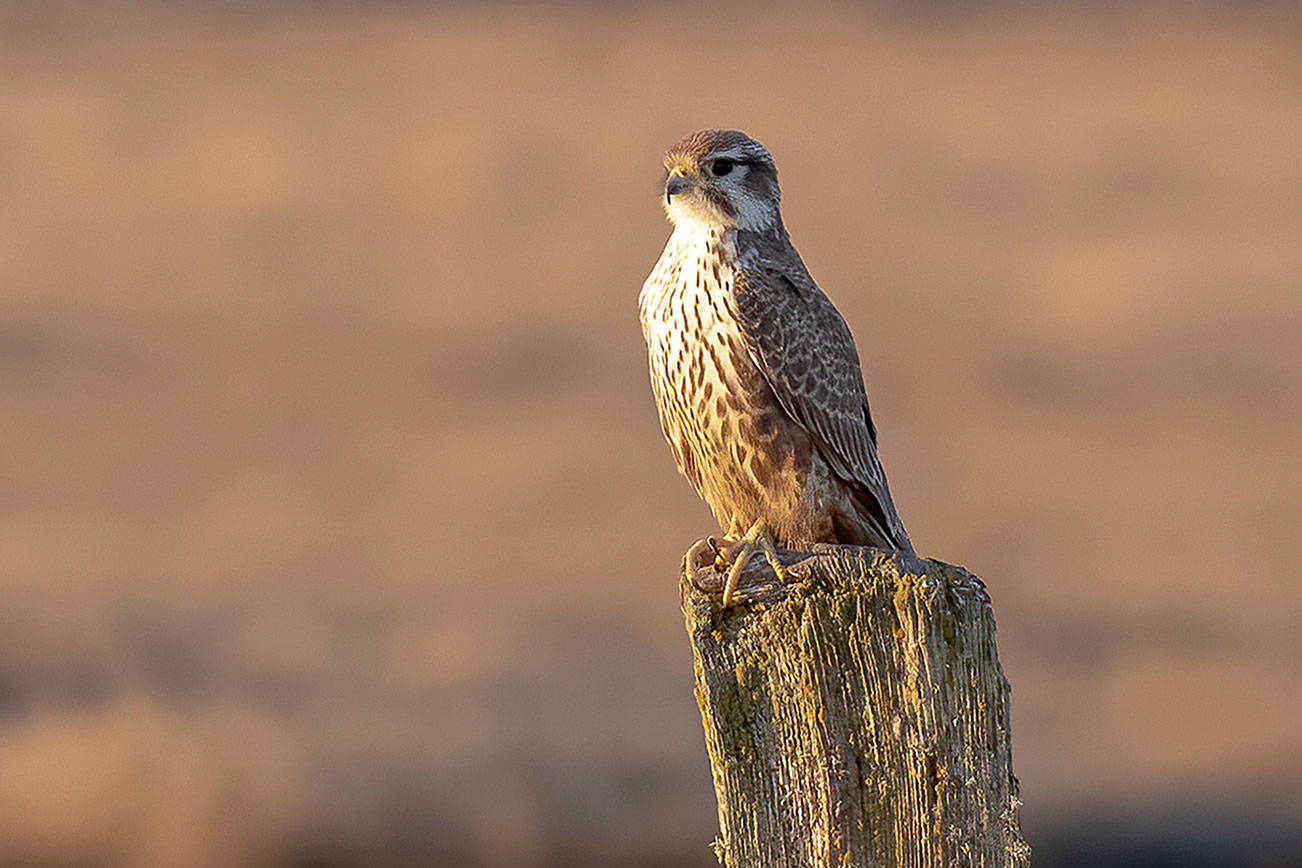Jann Ledbetter is accustomed to seeing raptors perched on the weathered posts just off the highway near Crockett Lake Preserve.
One caught her attention earlier this month, beautifully illuminated from the low light of the setting sun.
Ledbetter backed up her car and started snapping photos.
“I was assuming it was just another Northern Harrier,” Ledbetter said, referring to the preserve’s most common raptor. “I got a few ID photos before it flew off.”
Later, she thought the app she uses to identify birds had gone cuckoo.
“My Merlin Bird ID app identified it as a Prairie Falcon,” added Ledbetter, “but said that bird had not been reported there before.”
Little did Ledbetter know that she was now in rare company. After consulting with fellow members and birding experts with Whidbey Audubon Society, Ledbetter learned that the raptor she saw on March 9 was indeed a Prairie Falcon. Hers was only the fourth documented record of a Prairie Falcon in Island County and the first confirmed sighting in the county since 2011.
“If you want to think about Whidbey birds, that’s a pretty special bird,” said Jay Adams, an avid birdwatcher from Coupeville and board member with the Whidbey Camano Land Trust.
Various birding entities publish checklists of birds to indicate how relatively common or uncommon a specific species might be, Adams said. The Prairie Falcon isn’t even listed in Whidbey Audubon Society’s list for Whidbey Island.
This bird appeared to wander well beyond its expected range, which is generally more arid parts of the Western United States east of the coastal mountains. About once a year, a Prairie Falcon is spotted in Skagit County.
“I believe the Prairie Falcon Jann saw was a juvenile bird,” Adams said. “If so, this is not unexpected. It is not uncommon for young birds to be out of range when compared to adult birds, perhaps because adult birds are more experienced.”
Crockett Lake is a mecca for birders with documented sightings of more than 230 different bird species. Nearly a dozen raptor species can be seen around the 423-acre wetland preserve, which is permanently protected by the Whidbey Camano Land Trust.
Apparently, Ledbetter, the membership chair for Whidbey Audubon, wasn’t the only one who spotted the Prairie Falcon at Crockett Lake.
Jennifer Holmes, who regularly photographs birds around the preserve, took an image in January of a white-breasted raptor she also thought might be a Prairie Falcon but wasn’t sure.
Adams and other experts took a look at Holmes’s photo this week.
“The consensus is same bird, same post,” Adams said.
The Whidbey Camano Land Trust is a nonprofit nature conservation organization that actively involves the community in protecting, restoring and appreciating the important natural habitats and resource lands that support the diversity of life on the islands and in the waters of Puget Sound. For more information, visit www.wclt.org, email info@wclt.org or call 360-222-3310.


